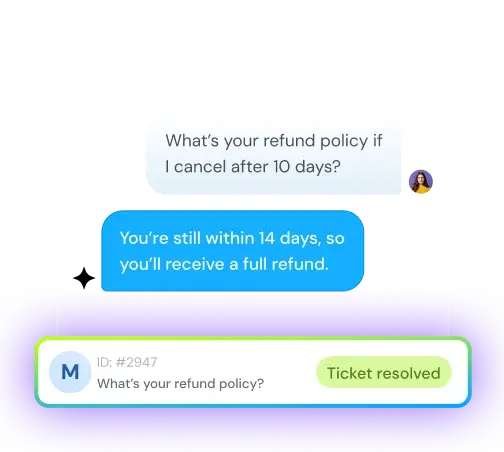The ultimate customer self service playbook for modern businesses
Sneha Arunachalam
Jul 14, 2025
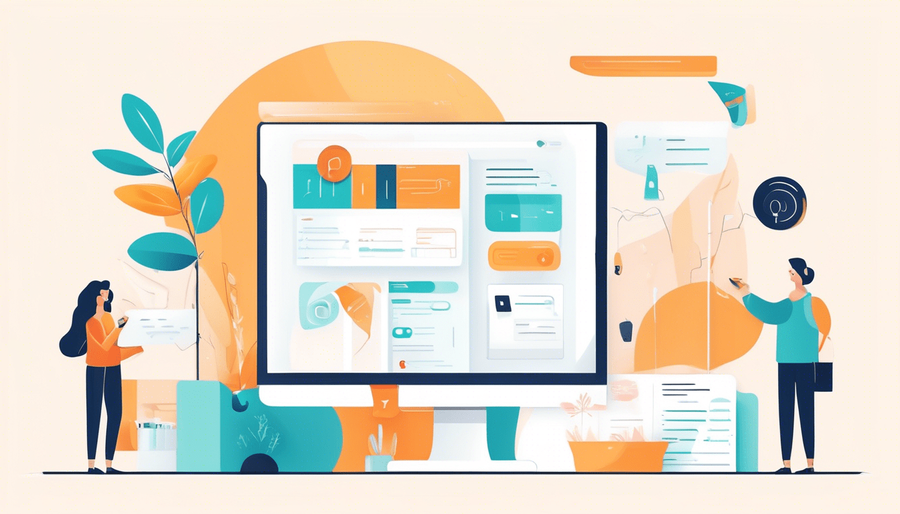
A customer has a question at 2 AM. No agents online. No one to call. But within seconds, they find the answer, fix the issue, and move on—without ever contacting support.
That’s the power of customer self service. It’s not just a trend—it’s how modern businesses scale support without sacrificing experience. Today’s customers expect instant answers, zero friction, and the freedom to help themselves.
In fact, customers now prefer to solve problems on their own, actively turning to self service channels before reaching out to support. And for good reason. A well-designed customer self service portal can resolve 40–70% of tickets without any agent involvement, saving time for both customers and support teams.
Yet, despite its clear advantages, many businesses still struggle to get it right. 61% of customers say they use self service for routine tasks—but often hit dead ends due to poor design, outdated content, or buried information.
What makes customer self service truly powerful is its core purpose: empowering customers to take control and find answers independently. When done right, self service can resolve up to 54% of customer issues faster than traditional methods.
In this blog, we’ll uncover the real value of customer self service, where most implementations go wrong, and how you can build effective, seamless experiences that your customers will actually want to use.
What is customer self service and why it matters
Self service tools have become a cornerstone of modern customer support, reflecting a major shift in how businesses meet customer expectations and deliver faster, more efficient help.
Definition and core concept
Customer self service means digital support that strengthens customers to find answers and solve issues without help from live agents. These tools include knowledge bases, FAQs, AI chatbots, customer portals, and community forums. The concept is simple - customers should know how to troubleshoot problems, get information, and complete tasks on their own terms.
The idea behind self service is both simple and powerful. Companies should give customers the tools they need to help themselves at any time and place they need support. People often say "the best support ticket is the one that never gets created". Self service offers quick solutions instead of making customers contact support for every issue.
How it fits into modern customer support
Customer service used to depend heavily on phone calls to contact centers. The digital world today looks very different. Self service has become the foundation of modern customer experience strategies.
Self service isn't just another support option - customers now want it first. Companies embrace a "self service-first" mindset. They understand that customers want to solve problems on their own before talking to human agents. Yet challenges exist - 53% of customers still go straight to an agent, usually because they don't trust the available self service options.
The best companies use self service to complement human support. This balanced strategy helps companies utilize data and AI to boost revenue while reducing costs—without hurting customer experience. self service channels resolve 54% of customer issues in average. This frees up the core team to handle more complex, valuable interactions.
Why customers prefer self service today
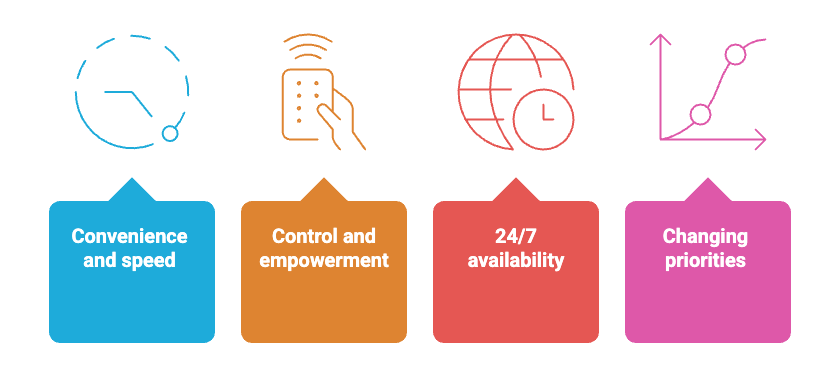
Customer priorities have moved strongly toward self service options. Studies show 81% of customers try to solve problems on their own before reaching out to representatives. On top of that, 88% expect brands to provide a self service portal.
The reasons are straightforward:
- Convenience and speed: Customers find answers quickly without waiting on hold or having long conversations. Quick solutions matter—88% want responses within 60 minutes, and 30% expect them within 15 minutes.
- Control and empowerment: Customers gain control over their support experience. They solve issues privately at their own speed.
- 24/7 availability: Help remains available anytime, whatever the business hours or time zones. Customers feel reassured knowing help is just a click away.
- Changing generational priorities: Younger people especially like self service options. Gen-Z and Millennials choose messaging, mobile apps, and digital interactions over traditional support.
Self service matches changing consumer behavior in a variety of industries. Harvard Business Review found that 81% of customers tried to solve issues independently before contacting support back in 2017. This trend keeps growing - 73% of customers now prefer self service technologies that enhance experiences while reducing staff interactions.
Customer expectations keep evolving. Effective self service has grown from a bonus feature into a crucial part of customer experience strategy.
5 Popular customer self service channels

Your customers want options — and rightfully so. Different people prefer different ways to find answers, which is why successful businesses offer multiple self service channels that work together.
Knowledge base
Think of your knowledge base as your customer's personal research library. Unlike basic FAQ pages that just cover the obvious questions, a solid knowledge base gives customers the deep dive they're looking for — step-by-step guides, product documentation, troubleshooting walkthroughs. The whole point is centralizing information so anyone can find what they need.
Here's what makes knowledge bases actually useful:
- Easy to navigate without getting lost
- Updated regularly based on what customers actually ask
- Organized with clear categories that make sense
- Easy to find from your main website
The proof is in the numbers —67% of customers prefer using self service options over talking to a customer service representative. A well-built knowledge base can handle tons of support tickets automatically, freeing up your team for the tricky stuff.
AI chatbots and virtual assistants
Modern chatbots aren't the clunky "press 1 for this, press 2 for that" systems from the past. Today's AI-powered assistants actually understand what customers are asking and respond like real people. They tap into your systems to give personalized help based on each customer's history.
What makes chatbots worth it:
- Always available, even at 3 AM on Christmas
- Instant responses — no waiting around
- Cuts support costs through smart automation
- Can handle multiple languages for global customers
Just make sure you've got good monitoring tools to keep your chatbot accurate. The sweet spot? 80% of routine questions can be handled by chatbots, which seriously reduces call volume.
Customer portals
Customer portals are like giving each customer their own personalized command center. Unlike your public help pages, portals show information specific to each person's account and history.
Customers can typically:
- Check their purchase history and loyalty points
- Update their info securely
- Track orders and see transaction details
- Get content tailored just for them
Security matters here — keep personal stuff locked behind proper login, ideally with two-factor authentication. The beauty of portals? They're available 24/7, so customers aren't stuck waiting for business hours.
Community forums and IVR systems
Community forums turn your customers into a support team that helps each other. People ask questions, share experiences, and offer solutions — creating a knowledge base that grows on its own. Forums really shine when customers become product experts and start suggesting improvements.
On the phone side, Interactive Voice Response (IVR) systems handle self service for callers. Modern IVR uses speech recognition and AI to figure out what people need and provide automated solutions. Customers can solve problems through voice prompts without waiting for an agent.
IVR benefits include:
- Fewer calls for simple information requests
- Smarter call routing than human operators
- Priority handling for different call types
- Round-the-clock availability
The smartest approach? Combine multiple channels so customers can switch between options based on what works best for their situation.
5 Reasons why self service actually works for everyone
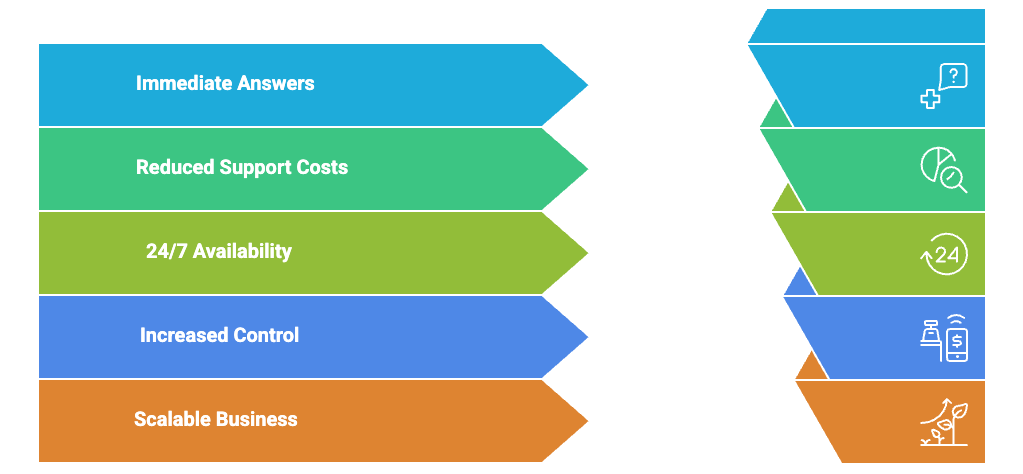
Self service isn't just a nice-to-have anymore — it's become something both businesses and customers genuinely want. The benefits go way beyond simple convenience.
Your customers get answers right now
Here's the thing about waiting: nobody enjoys it. Self service eliminates those frustrating hold times by giving customers immediate access to solutions. Instead of sitting in a queue or waiting for email responses, they can jump straight to fixing their problem.
The speed difference is pretty dramatic. While most support responses take over 12 hours, 46% of customers expect answers within four hours, and 12% want responses in 15 minutes or less. Self service closes that gap completely — answers are available instantly.
Your support costs drop significantly
The money side of this is hard to ignore. Harvard Business Review found that a self service interaction costs pennies, while live support can run up to $13 per contact. That difference adds up fast and lets you:
- Cut your cost-per-resolved contact
- Rely less on expensive support channels
- Keep your customer service team lean
- Put resources toward bigger priorities
One company saved their customer success team over 2,000 hours just by eliminating basic training sessions through self service. And 65% of customer care leaders say better self service directly reduced their call volumes.
Help is available around the clock
Think about when you actually need help — it's usually not during business hours. Self service tools work 24/7, no matter what time zone you're in or what holiday it is. Your customers get that reassurance that help is always there when they need it.
For businesses with global customers, this always-on availability makes a huge difference in the overall experience. It's become a real competitive advantage, especially since 67% of consumers now expect 24/7 support.
Customers feel more in control
When people can quickly find their own answers, they feel empowered instead of frustrated. The connection between self service and satisfaction is clear — 88% of U.S. customers actually prefer self service portals for better experiences.
Good customer self service options boost your CSAT scores and strengthen your brand. That's why support leaders are investing more in self service specifically to improve customer satisfaction. People like solving problems at their own pace.
Your business can scale without the headaches
Self service is a lifesaver for growing companies. You can add new customers without hiring more support agents for every single person.
These systems handle massive volumes of requests at the same time with minimal extra resources. A good self service portal can help hundreds or thousands of users simultaneously without drowning your support team.
This scalability means you can grow without hitting the operational walls that used to limit expansion. When done right, self service helps you keep customers happy and loyal while driving steady revenue growth.
The best part? Your support system grows right alongside your business, delivering consistent experiences no matter how many customers you serve.
5 Best practices to build a self service system that works
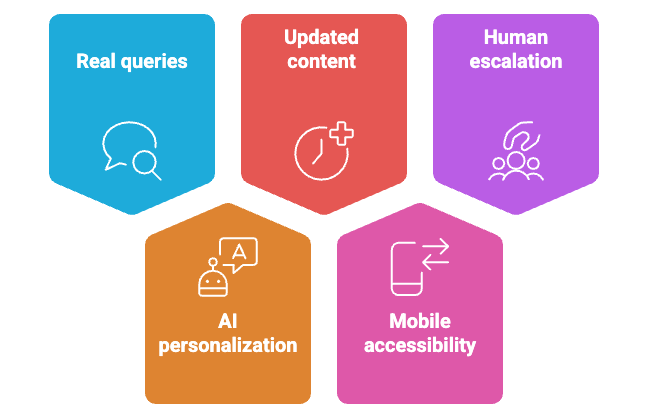
Here's the thing about building self service that actually works — you can't just throw up a few FAQ pages and call it done. Your customers need something that genuinely solves their problems, not just another place to get frustrated. A solid self service system takes some planning, but it's worth doing right.
Start with real customer queries
Don't guess what your customers need help with. Seriously, your assumptions probably won't match reality. Instead, dig into the actual questions people are asking your support team.
Here's where to look for real customer needs:
- Dig through existing support tickets to spot patterns
- Check your contact center analytics for the questions that keep coming up
- Tag support conversations and find the themes driving 80% of your ticket volume
- Talk to customers directly about where they get stuck
This approach means you're building solutions for actual problems instead of ones you think exist.
Use AI to personalize responses
AI can turn basic self service into something that feels smart and helpful. When you add AI chatbots and personalization tools, customers get experiences that actually fit their specific situation.
AI makes self service better through:
- Instant answers based on what you know about each customer
- Smart content suggestions that match what they're really looking for
- Spotting gaps in your knowledge base so you can fill them
- Automatically handling common issues before they become tickets
Connect your AI tools to your knowledge base through Retrieval-Augmented Generation (RAG), and you'll get responses that feel personal rather than robotic.
Keep content updated and searchable
Your self service portal is only as good as what's in it. Outdated information just makes customers more frustrated. Regular content audits aren't glamorous, but they're essential.
Keep your content fresh by:
- Reviewing what gets used and what doesn't based on actual data
- Updating stuff when your products or services change
- Making sure people can actually find what they need with good search optimization
- Using smart metadata so the right content shows up at the right time
Track which articles work well and which ones need help through engagement analytics.
Design for mobile and accessibility
Your customers are going to use their phones. That's just reality — 88% of users expect self service options that work on mobile. Plus, you need to make sure everyone can use your system, which means following Web Content Accessibility Guidelines (WCAG).
Make sure you've got:
- Design that works on any device or screen size
- Easy navigation with search that's simple to find
- Good color contrast (at least 4.5:1 for regular text)
- Support for screen readers and keyboard navigation
Offer easy escalation to human support
Even the best self service won't solve everything. When customers hit a wall, give them a clear path to real people. This "no dead ends" rule keeps customers from getting angry when self service reaches its limits.
Set up escalation with:
- Live chat on pages where things get complicated
- Clear "Contact Us" buttons that are easy to spot
- Callback options when AI can't handle the issue
- Agents who can see what customers already tried
Remember — self service isn't about getting rid of your support team. It's about using them for the complex stuff while letting automation handle the routine questions.
What most businesses get wrong about customer self service

Businesses often struggle to implement customer self service solutions despite their rising popularity. Let's take a closer look at four common mistakes that stop companies from tapping into the full potential of their self service investments.
Focusing on deflection instead of resolution
Companies measure success by deflection rates—counting avoided support tickets—rather than actual resolution rates. Research shows that while 30% of customers start their support trip through self service, only 25% of cases get resolved there. This gap exists because businesses design chatbots and knowledge bases to intercept customer questions without solving actual problems. Customers either give up searching or return with increased frustration. The real measure of effective self service should track genuinely resolved customer problems, not just diverted ones.
Neglecting content quality and structure
Quality and structure of content play a crucial role in self service success. Companies build knowledge bases that are so big with extensive information that customers feel overwhelmed. Self service resources become digital mazes without proper organization, search capabilities, and regular updates. Technical jargon and complex explanations make things worse. Customers struggle through irrelevant information without finding answers to their specific questions.
Lack of integration with backend systems
Most self service tools work in isolation from core business systems. These tools can't access customized information customers need without connecting to backend databases like CRM and ERP systems. To cite an instance, backend system integration provides live data on prices and stock. Customers could check their order status or account details without reaching out to support. This disconnect creates a fragmented experience where customers switch channels to complete basic tasks.
Ignoring feedback and analytics
Companies fail to exploit customer data to improve their self service offerings. Limited analytics prevent businesses from understanding:
- Questions customers actually ask
- Points where customers abandon self service trips
- Content that resolves issues effectively
- Changes in self service performance over time
Companies can refine their self service experience by collecting data and acting on customer feedback to serve their audience better.
Conclusion
Customer self service has evolved beyond a nice-to-have feature into a crucial part of modern support strategy.
Success in customer self service goes beyond setting up a knowledge base or chatbot. The focus should be on actual problem resolution rather than just deflecting inquiries. Your content must stay current, organized logically, and merge smoothly with backend systems.
The advantages are clear. Companies can reduce support costs compared to traditional methods. Customer self service also provides round-the-clock support while boosting customer satisfaction and loyalty.
Many businesses face challenges with implementation. Poor content quality, improper system integration, and ignored user feedback can turn self service from an asset into a source of frustration.
Self service strategy works best as part of an all-encompassing customer engagement approach. Think of it as an ongoing product instead of a one-time project. Your business will create truly effective customer self service experiences by monitoring key metrics and fine-tuning offerings based on customer behavior. This approach enables customers while building a stronger business.
Quick summary: Customer self service: What most businesses get wrong
Modern businesses are struggling to implement effective customer self service solutions despite growing customer demand. While customers increasingly prefer solving problems independently, many companies fail to deliver seamless self-service experiences that actually work.
- Customer self service resolves significant portions of support tickets without agent involvement, dramatically reducing costs
- Customers expect brands to provide self-service portals with round-the-clock availability
- Companies achieve substantial cost savings compared to traditional support methods
- AI-powered chatbots and knowledge bases are transforming how customers find solutions
- Mobile accessibility and proper system integration are crucial for success
- Most businesses focus on deflection rather than resolution, neglect content quality, fail to integrate backend systems, and ignore customer feedback analytics.
Successful customer self service requires more than basic FAQ pages—it demands quality content, smart AI integration, and continuous optimization based on real customer behavior. When implemented correctly, self-service becomes a powerful tool that empowers customers while building stronger, more scalable businesses.
Frequently Asked Questions
Self-service in customer service refers to tools that let customers find answers or solve issues on their own without contacting a support agent. This includes FAQs, knowledge bases, chatbots, and customer portals. It’s faster, available 24/7, and reduces support load for businesses.
To enable customer self-service, you need a well-organized knowledge base or help center, intuitive navigation, and searchable content. Tools like chatbots, customer portals, and FAQs enhance the experience. It also requires regular updates, clear instructions, and mobile-friendly design to be effective.
AI can significantly improve customer self-service by making it faster, smarter, and more personalized. Here's how:
1. Smarter Search Results
AI-powered search understands user intent—not just keywords. So even if a customer types a vague or misspelled query, the right help article still shows up.
2. Contextual Recommendations
AI can analyze what page the customer is on, what actions they’ve taken, and what past issues they’ve had—then suggest the most relevant help content automatically.
3. Conversational Chatbots
Instead of static FAQs, AI chatbots can have natural conversations, answer multiple questions, and guide users step-by-step—all without involving a human agent.
4. 24/7 Instant Support
AI doesn’t sleep. It can handle routine questions at scale, instantly—reducing wait times and keeping customers happy even outside business hours.
5. Continuous Learning
AI improves over time. It learns from customer behavior, ticket history, and feedback to fine-tune responses and fill knowledge base gaps automatically.
A knowledge base is a structured library of help articles, FAQs, and guides that users can search and browse on their own. A chatbot, on the other hand, is an AI-powered assistant that interacts with users in real-time—offering quick answers, suggesting articles from the knowledge base, or guiding them through tasks conversationally.
Think of the knowledge base as a manual, and the chatbot as the guide that walks you through it.
An effective self-service system typically includes:
- A well-organized knowledge base with clear, updated content
- An intelligent search function that understands user intent
- AI chatbots for instant, conversational help
- A customer portal to manage tickets and requests
- Contextual support widgets embedded across your website/app
- Analytics and feedback tools to track performance and improve content
It depends on the situation. Self-service is better for simple, repetitive issues—like password resets, shipping info, or setup instructions. It’s faster, available 24/7, and empowers users to solve problems on their own.
But live support is still essential for complex, emotional, or high-stakes situations where human judgment and empathy are needed. The best customer experiences offer both, letting users choose what works best for them.
